REVISED: COWL WATER LEAKS DIAGNOSIS AND REPAIR

VEHICLES AFFECTED: 1976 - 1984 Chevettes, Acadians & T1000's
This bulletin covers the possible causes of front end water leaks on past and present model 'T' Cars along with the diagnosis and repair procedure necessary to correct them.
SYMPTOMS
Front end water leaks may be indicated by:
- water On top or under the front carpet - water in the glove box - water in the rear floor area - a musty odour in the vehicle.
CAUSE
Front end water leaks may be caused by various items. Figure 1 illustrates the locations of the following areas:
1. Sealer skip at the inner fender to cowl seam.
2. Poor sealer adhesion at the wind-shield pillar to cowl joint flange.
3. Cracked sealer at the coach joint.
4. A bridge in the MIC weld at the windshield opening lower corner.
5. Sealer skip under the windshield reveal mouldings.
DIAGNOSIS
More than one leak may be present on a vehicle in any or all of the areas detailed in Figure 1. In order to ensure that a satisfactory repair is performed the first time, the following is recommended:
1. Loosen the sill plate, remove the kickpad and fold back the carpet on the affected side of the vehicle. Inspect for signs of leaking.
2. Seal off the coach joint and lower windshield by placing a piece of tape over the coach joint and windshield reveal moulding on the affected side. (see Fig. 2).
3. Use an Unrestricted water flow directed into the gap between the fender and the hood. This will duplicate driving in a heavy rain. (see Fig. 3.). If no water enters the vehicle, the inner fender to cowl seam and the w/s pillar to cowl joint flange are OK, proceed to Step 5.
OR
If water enters the vehicle, it is probably due to poor sealer adhesion at the windshield pillar to cowl joint flange or sealer skip at the inner fender to cowl seam (see Fig. 1). In order to isolate the exact cause of the leaks, proceed as follows:
4. Seal the die relief hole (Fig. 4) with a piece of strip caulk. Retest for leaks as shown in Fig. 3. If the leak now stops, it is probably due to a sealer skip at the inner fender to cowl seam. Follow repair procedure 'A' as described below.
Retest for water leaks as shown in Fig. 3, then proceed to Step 5.
OR
If water still enters the vehicle, the leak is probably due to poor sealer adhesion at the windshield pillar to cowl joint flange. Follow repair procedure 'B' as described below.
Retest for water leaks as shown in Fig. 5, then proceed to Step 5.
5. Remove the tape from coach joint and retest for leaks with an unrestricted water flow as shown in Fig. 6. If no water enters the vehicle, the coach joint and lower windshield opening MIG weld are OK, proceed to Step 8 and water test the windshield for leaks.
OR
If waterr is now entering the vehicle, it may be due to a poor seal at the coach joint, or a gap in the MIG weld at the windshield lower corner. Proceed as follows to locate the problem.
6. Insert an air nozzle into one of the upper access holes behind the kick pad and apply low pressure air (less than 205 KPA/30 PSI). (see Fig. 7). It may be helpful to attach a length of copper tubing to the air gun.
7. Place a bubble solution or glass cleaner (GM P/N No. 992727 or equivalent) over the coach joint and lower corner of the (see Fig. 8) and bubble test the area.
Repair the coach joint or weld leaks described below in Part 'C' and 'D' of the repair procedure as required.
Retest with water only and proceed to Step 8. (Air pressure at this stage might damage the repair.)
8. Use an unrestricted waterflow to leak test the windshield sealant (see Fig. 9). Start at the base of the test area and work upwards. If leaks are detected at this point, refer to Section II of the Fisher Body Service Manual.
Repair Procedure
(See Table 1 or materials list)
A. Inner Fender to Cowl Seam
Seal the inner fender to cowl seam (Fig. 10) with a brushable seam sealer or an aerosol rubberized undercoating.
Seal seam as far up on cowl as possible.
NOTE: When using a brushable sealer, it may be necessary to use a brush with an extended handle in order to reach hidden areas.
Fill in the die relief hole with a thumb grade sealer (see Fig. 4).
Re water test
Continue diagnosis at Step 5 above.
B. Windshield Pillar to Cowl Joint Flange
Loosen the fender by removing the top five and two rear screws.
Pull back the fender to expose the W/S pillar to cowl joint.
Bubble test the flange area as per Steps 6-7) of the diagnosis. (see Fig. 6, 7, 11).
Remove existing sealer using a suitable tool.
Repair area by applying a brushable medium body sealer.
Re water test.
Reinstall fender and continue diagnosis at Step 5.
C. Coach Joint Leak
Dig out and remove as much of the existing sealer as possible using a suitable tool.
NOTE: Loosening of the fender may be required as per windshield pillar to cowl joint flange repair procedure (B).
Apply a flow grade paintable sealer to the joint and force the sealer into the gap. Refinish area as required after testing is complete. Retest with water only and continue diagnosis at Step 8.
D. Mig Weld Windshield Opening Lower Corner
Slide the escutcheon located at the lower centreline of the vinyl reveal moulding to one side.
Pry one edge of the moulding out of the urethane.
When the moulding is removed about 75mm (3 in. ), grasp the moulding by hand and slowly pull away from the body.
DO NOT remove the entire moulding but stop about 75mm (3 in. ) up from the bottom of the windshield opening.
Cut away any loose urethane that is exposed in the MIC weld area.
At this point, inspect for any corrosion or damaged metal around the MIC weld area and repair as necessary using established procedures.
Clean and reprime exposed areas with the primer supplied in the windshield repair kit (GM P/N 9636067 or equivalent).
Trim the lower barb off the reveal moulding using a sharp knife. (see Fig 13)
Apply enough urethane in exposed areas to fill gap and to retain the reveal moulding.
Force the moulding back into place.
NOTE: Tape may be required to hold the moulding in place until the urethane cures.
Flood the area with lukewarm water in order to cure the urethane.
Slide the escutcheon back into place.
E. Windshield Water Leak
- Repair windshield leaks as described in Fisher Body Service Manual under Section 11 Stationary Glass - water leak correction

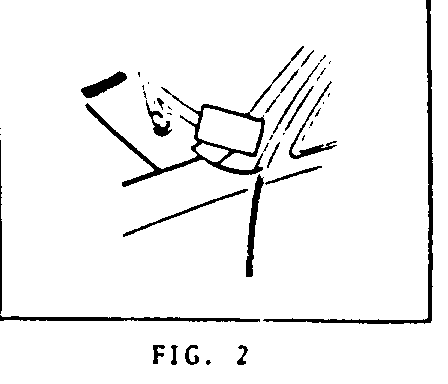
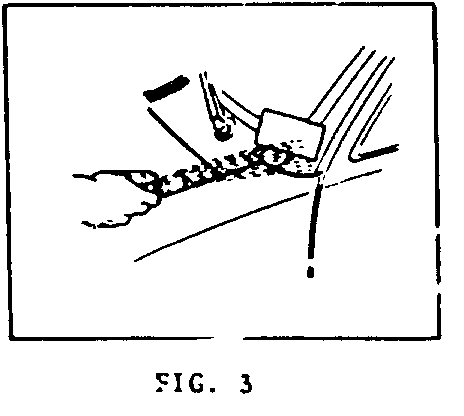

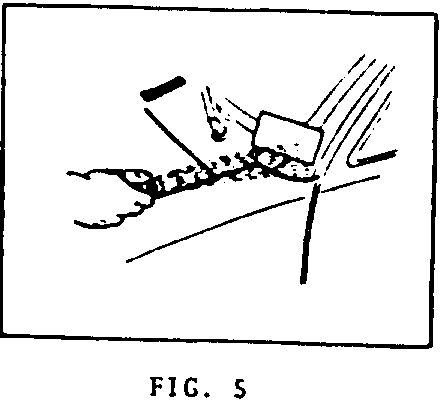
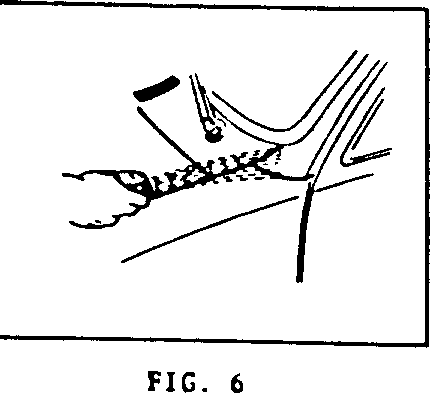
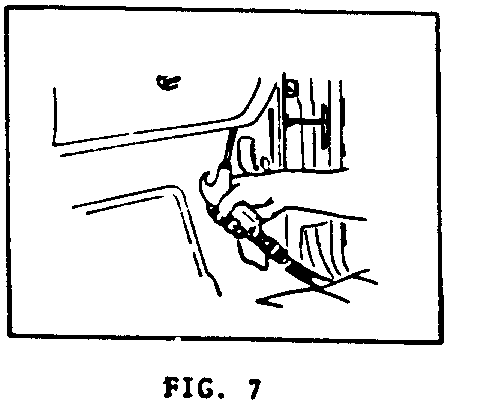
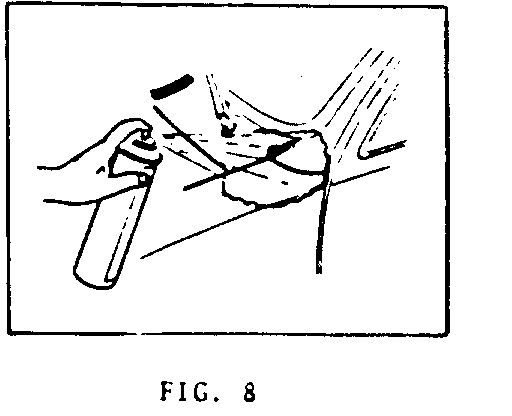
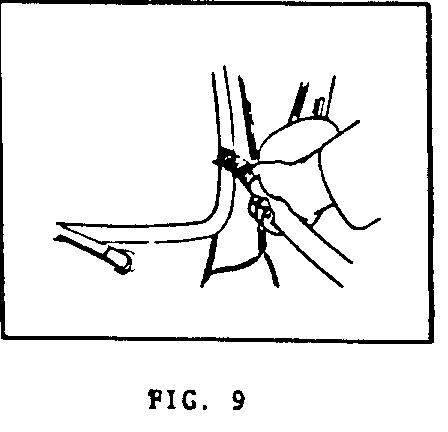
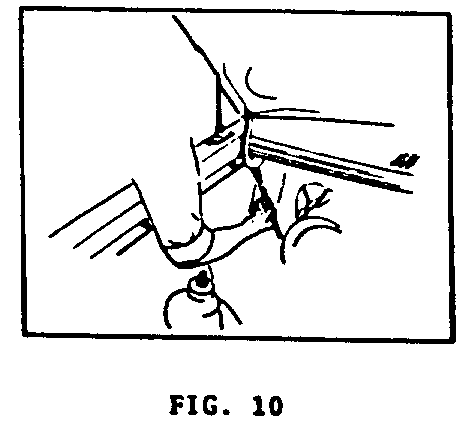
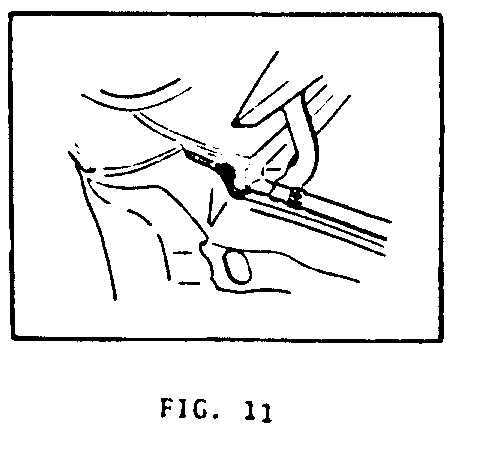
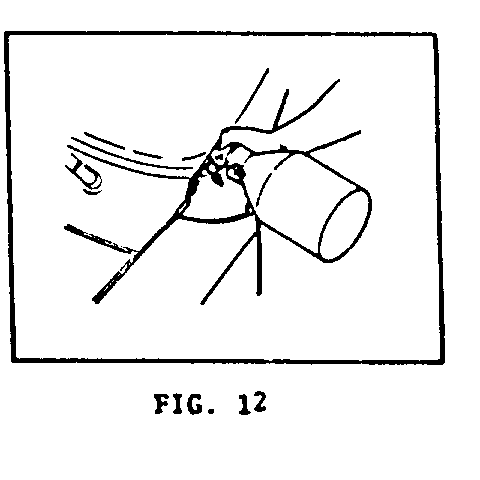
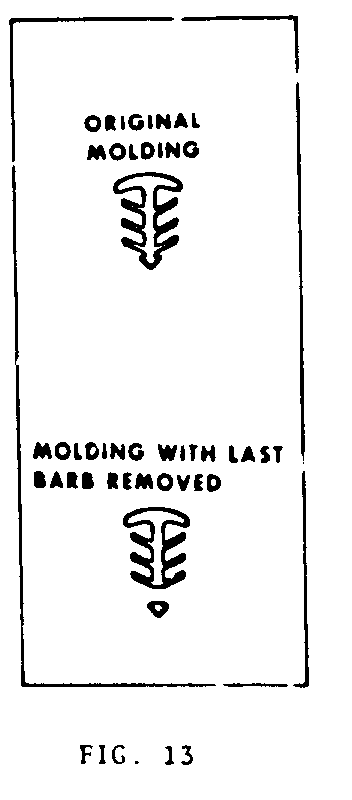
General Motors bulletins are intended for use by professional technicians, not a "do-it-yourselfer". They are written to inform those technicians of conditions that may occur on some vehicles, or to provide information that could assist in the proper service of a vehicle. Properly trained technicians have the equipment, tools, safety instructions and know-how to do a job properly and safely. If a condition is described, do not assume that the bulletin applies to your vehicle, or that your vehicle will have that condition. See a General Motors dealer servicing your brand of General Motors vehicle for information on whether your vehicle may benefit from the information.
